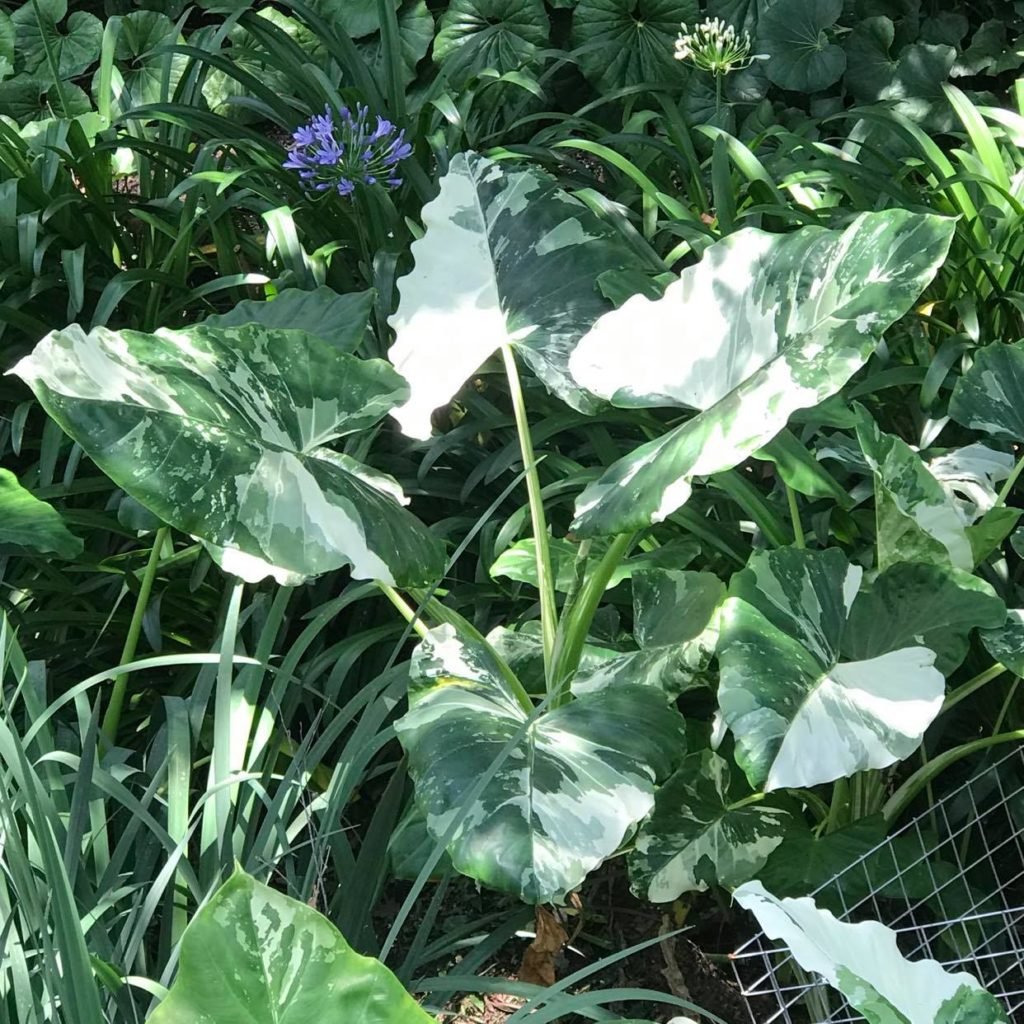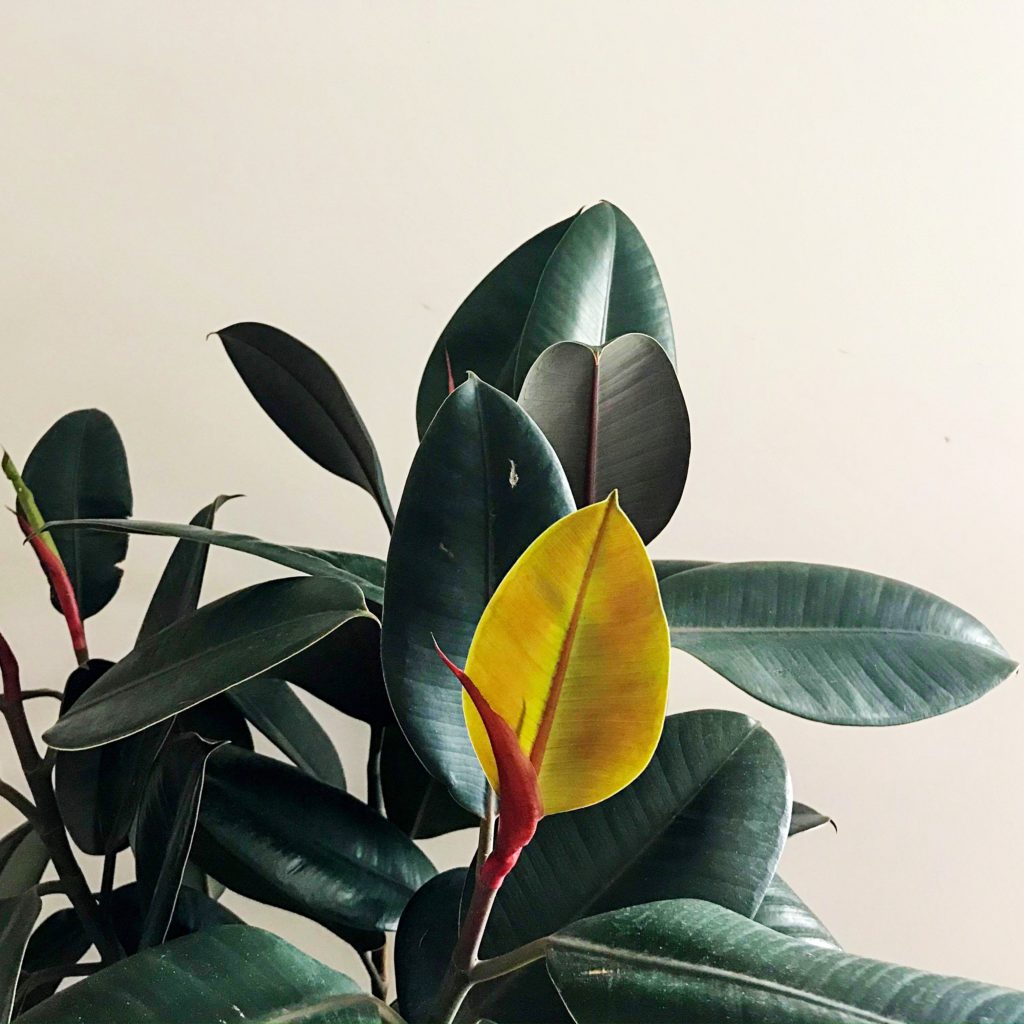Alocasia Macrorrhiza ‘Variegata’ a.k.a Variegated Elephant Ear

Variegated Elephant Ear Quick Overview
| Full Size | 6 foot |
| Light | Bright indirect |
| Temperature | 55- 80°F (12-26˚C) |
| Humidity | Medium-high |
| Cost | $$ |
| Care Level | Easy |
| Toxicity | Toxic |
Size
When kept indoors with proper care you can expect your Variegated Elephant Ear to reach 6 foot or more in length. Elephant Ear can grow up to 8 foot.
Light Requirements
Variegated Elephant Ear prefer to be positioned in bright indirect light for best growth and require this to thrive. A sign your Variegated Elephant Ear is getting too much light is burnt leaves. This can be resolved by changing the position of your plant to somewhere that better suits it’s light requirements.
Temperature
Variegated Elephant Ear will perform best when in an area which maintains a temperature of 55- 80°F (12-26˚C). Being kept outside of this temperate range for prolonged periods of time can lead to poor plant health.
Humidity
Maintaining a medium to high humidity will assist in keeping your Variegated Elephant Ear happy and healthy. If your plant is housed in a spot with a humidity level consistently outside of this range click here for tips on how to increase or decrease humidity levels.
Watering Requirements
Variegated Elephant Ear like the soil to be constantly moist. You should water your Variegated Elephant Ear when the top inch of soil is dry. When watering your Variegated Elephant Ear, water until the water is draining freely from the drainage holes. During the winter months, you can water less frequently.
Fertilizing requirements
As a rule of thumb your Variegated Elephant Ear should be fertilized tri-annually with a slow release fertilizer. Fertilize sparingly and at least 6 inches away from the base. This will assist in keeping your plant alive as well as promote healthy growth. It’s best to avoid the cheaper fertilizers that contain heavy salts as they can damage the roots and could even kill the plant.
Soil Requirements
Variegated Elephant Ear require a rich organic, moist soil that is well draining. It’s best to try and avoid wet, mucky and dry, sandy soils.
Diseases & Pests
The most common diseases and pests that you can encounter whilst caring for your Variegated Elephant Ear are spider mites, thrips, bacterial leaf spot, phyllosticta leaf spot and leaf blight. For a wide range of information on combating a large range of indoor plant diseases and pests click here.
Toxicity
Variegated Elephant Ear are considered to be toxic to cats and dogs if ingested.



